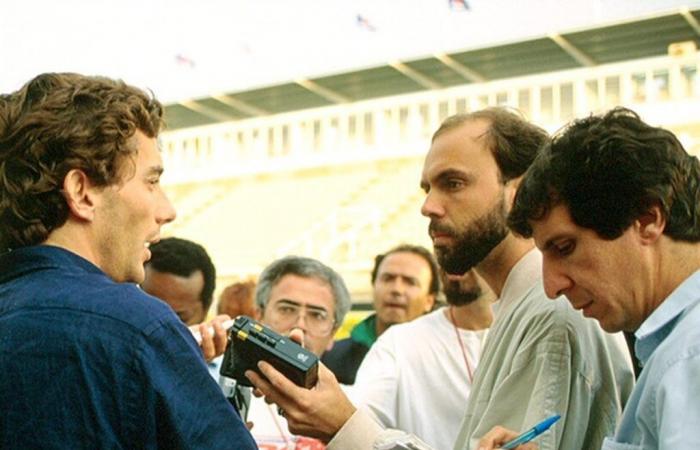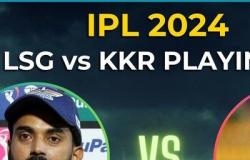
A moving report, at times very sad, rich in details, revealing, with information even unpublished, 30 years later. A true document, of historical value, about the loss of Ayrton Senna, in Imola, Italy, on May 1, 1994.
Journalist Livio Oricchio, present at the San Marino GP at the Autódromo Enzo e Dino Ferrari, narrates in first person everything he experienced on that “dark” weekend, a term still used today by F1 professionals to define it.
In addition to Senna, on Sunday, F1 lost on Saturday the Austrian driver Roland Razenberger, from the Simtek team, and on the first day of training, Friday, Rubens Barrichello, from Jordan, starting his career, barely died either. He suffered a serious accident.
Who was Ayrton Senna, the last Brazilian three-time F1 champion?
The work has an opening text and 12 chapters, a mini-book presented digitally. The texts are long, as they are concerned with contextualizing the events of that weekend, which is important for a global understanding of the tragedies.
You will see that what happened on the Italian track was directly related to the radical change in regulations for that season, among other factors.
And its length is also due to the nature of writing, to make available as much information as possible obtained by an eyewitness at the race track and at the Maggiore Hospital, where Senna was transported and his death was announced. More: the impressive experience of the reporter returning to Brazil, together with other journalists, next to Senna’s coffin in business class on the Varig flight from Paris to São Paulo. Good reading.
It is an already traditional reaction: as we approach May 1st, the image of a rich character whose work extends beyond his success in sport begins to populate more intensely the minds of thousands of citizens, be they Brazilians, Italians, Japanese , English and other nationalities.
Most are able to remember, in detail, where they were on May 1, 1994, even if they were still children, the date on which our character transferred his sphere of activity to another universe. He profoundly impacted the lives of many.
It is possible to expand a little further: there is already a generation that did not know him, they were born after the 1994 San Marino Formula 1 GP, but they admire him, are inspired by his philosophical principles, always present when his figure comes to light, alongside, of course, the recovery of his exceptional skill that places him among the greatest pilots of all time. Three-time world champion, for example.
Thirty years. A considerable block of time. Can you believe? So far and so close at the same time. On the 1st it will be 30 years since not only Brazil, but humanity lost Ayrton Senna. Certain representatives of our species have no nationality, their work is universal and immune to time, it will always touch those who know it, no matter the era.
In the American film “A Space Odyssey”, by director Stanley Kubrick, from 1968, despite projecting the future, the theme song is “Thus Spoke Zarathustra”, by the German Richard Strauss, composed in 1896. You can better understand what it means an eternal and borderless work? Transcends generations of different cultures. This is what is already happening with Senna’s legacy.
From 1984 to 1994, the years in which he competed in F1, Senna traveled from Brazilian idol to national hero, with fans all over the world. It was with this status that he left the stage.
As a journalist, I closely followed much of Senna’s career. I started covering races at racetracks in 1987 and was present at practically all GPs from 1991 to 2020. I was an eyewitness to Senna’s achievements, of all kinds. A privilege!
But our conversation in this series of 12 chapters that I present below is not intended to address what Senna accomplished in F1. The focus here is everything that surrounded his loss, in the third stage of the championship, in Imola, as mentioned, 30 years ago.
Let’s understand together that the accident at Curva Tamburello, at 2:17 pm, on the sixth lap of the race, was not the result of chance. It is part of a series of events that help a lot to explain it. No conspiracy theories, please.
Strictly speaking, it begins with the radical change in F1’s technical and sporting regulations from 1993 to 1994. It then goes through the history of the main engineer responsible for the model used by Senna in that race, the Williams FW16-Renault, the Englishman Adrian Newey, and the empiricism that governed the overall safety of the competition, among other aspects.
The series also offers an account in unprecedented detail of the shocking moments experienced by us present at the Maggiore Hospital in Bologna, where Senna, already dying, was transported by helicopter after the accident, of the information passed on to us by Doctor Maria Teresa Fiandri with every new development in the clinical picture, until the official announcement of death, at 7:05 pm, local time.
Then, in the final chapters, I narrate the painful experience of traveling back to Brazil, for 11 hours, next to Senna’s coffin in the business class of the Varig Paris-São Paulo flight, together with professionals from his staff and journalist friends.
Finally, we will see that the loss of Senna and the Austrian driver Roland Ratzenberger, from the Simtek team, the day before, in the same event, were not in vain.
It is possible to say that those two fatal accidents led F1 to such a huge revolution in its safety that since then many lives have been saved, not just in F1, but in world motorsport.
A little while ago I mentioned the word “empiricism” to define how F1 safety was thought of. After the creation of the FIA Institute, resulting from the two tragedies in Imola, empiricism gave way to scientism. I explain in detail in the closing chapter. Let’s share everything.
This Monday, on ge, read the first chapter of the special series.
Tags: Special series tells behindthescenes footage Sennas fatal accident tragedy transformed formula
--




